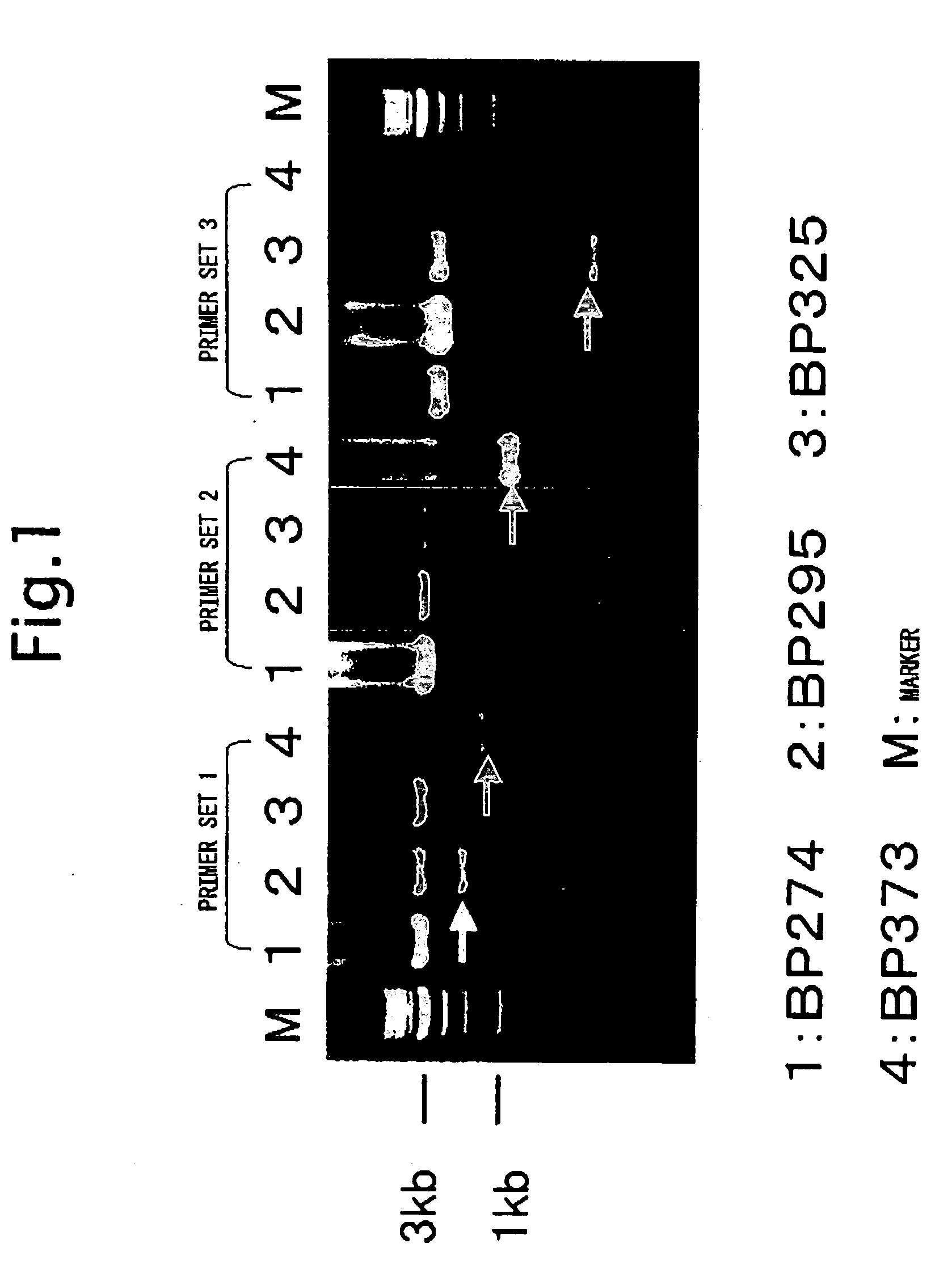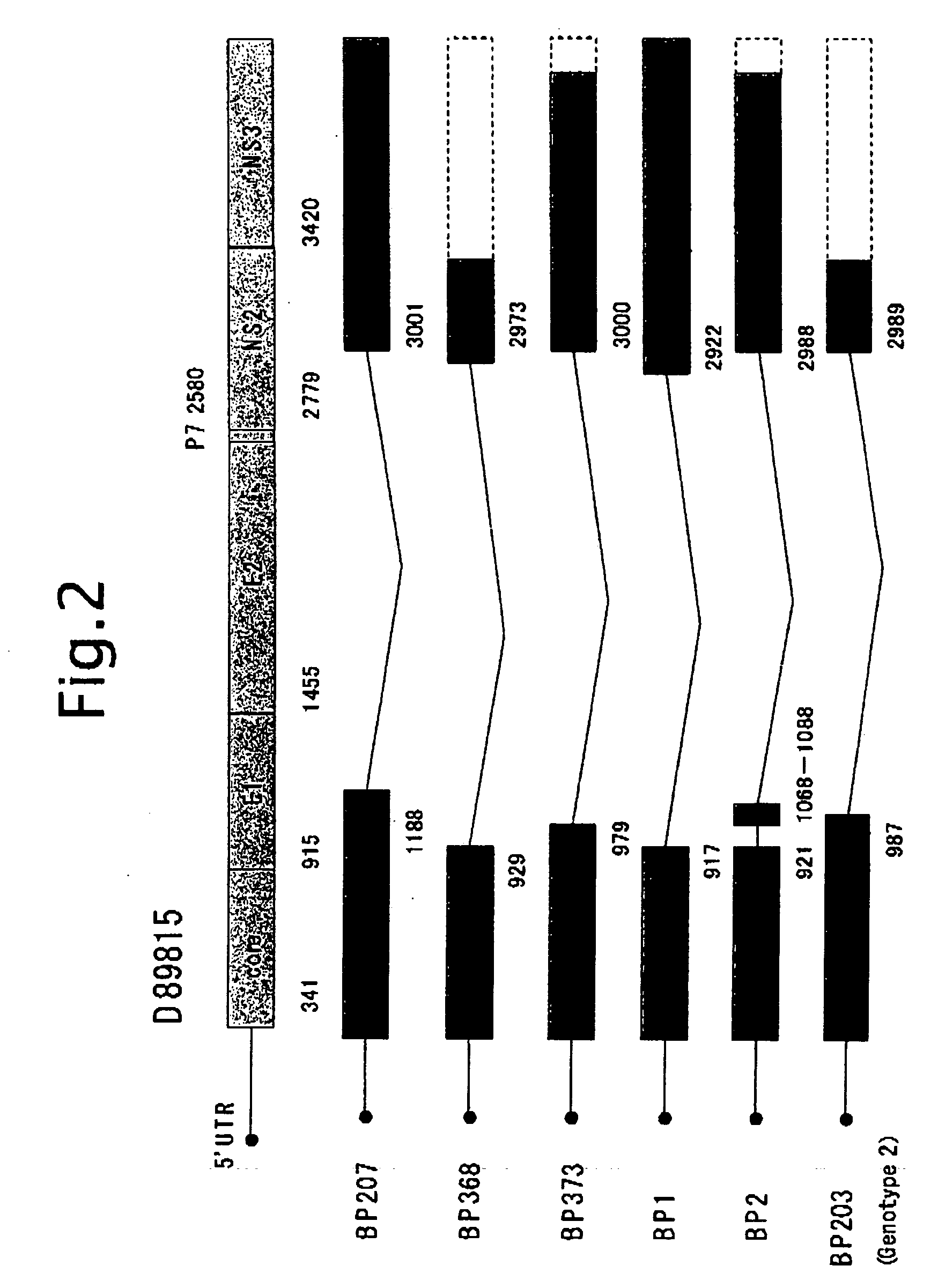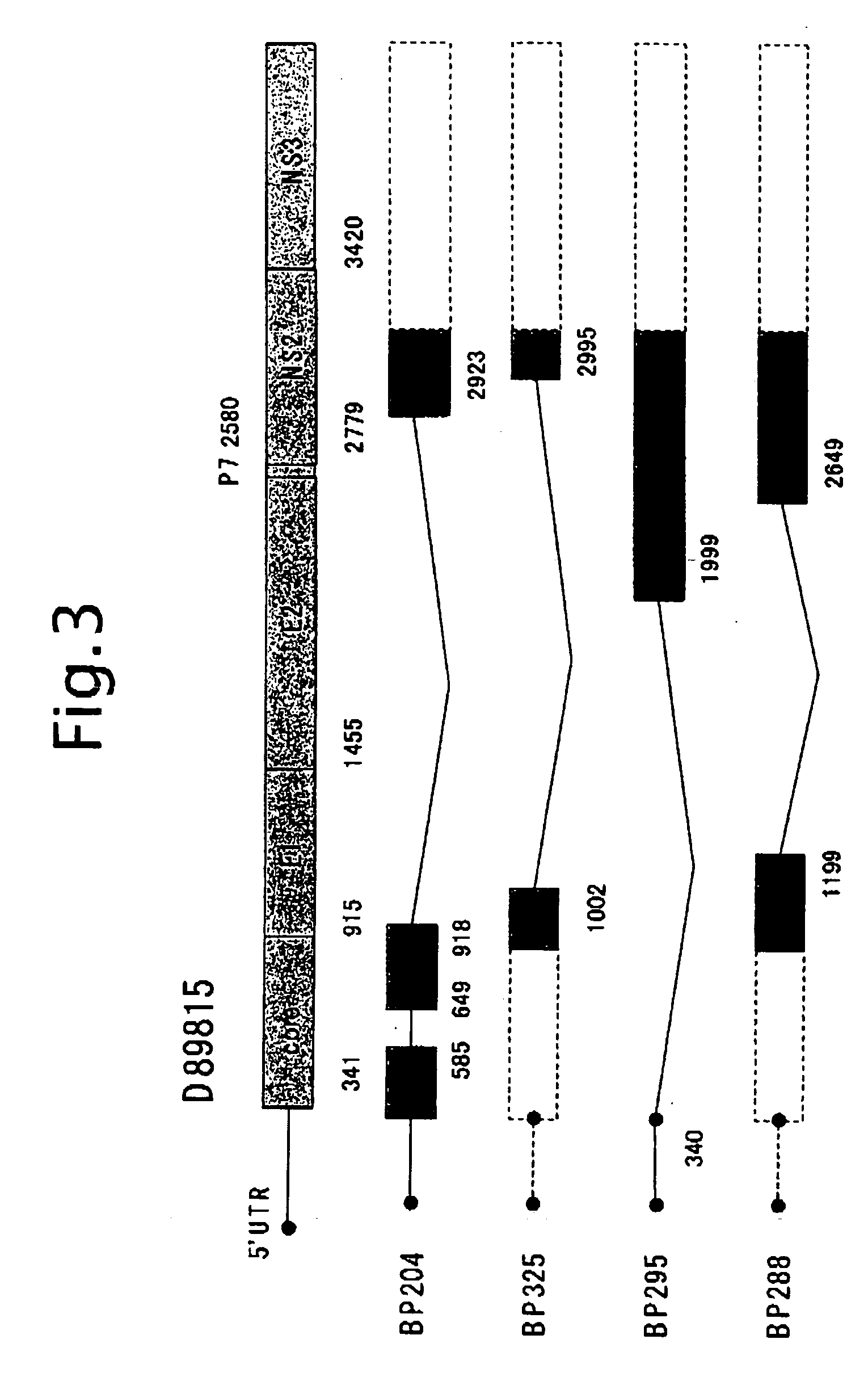Hcv rna having novel sequence
a rna and hcv technology, applied in the field of hcv rna novel sequence, can solve the problems of difficult development of hcv-specific therapeutic agents, difficult drug screening, and a great burden on patients
- Summary
- Abstract
- Description
- Claims
- Application Information
AI Technical Summary
Benefits of technology
Problems solved by technology
Method used
Image
Examples
example 1
Isolation and Analysis of a Truncated Genome Sequence
[0110]A patient liver section BP207 (0.5 mm×1 mm) was disrupted in 100 μl of the RIPA buffer (20 mM Tris-HCl [pH 7.5], 150 mM NaCl, 1% NP40, 0.1% deoxycholate, complete protease inhibitor cocktail [Roche Diagnostics Corporation]), and after centrifuging at 10 krpm for 5 minutes, the supernatant was collected. From this extract, using the High Pure Viral Nucleic Acid Kit (Roche Diagnostics Corporation), a nucleic acid was purified according to the manufacturer's instructions. To the nucleic acid purified, the HC9405R-1b primer was added, and using the MMLV reverse transcriptase (Invitrogen) a reverse transcription reaction was carried out at 42° C. for 1 hour according to the manufacturer's instructions to obtain cDNA.
[0111]To this reaction mixture, RNaseH (Invitrogen) was added, and reacted at 37° C. for 30 minutes to digest RNA. Using a portion of this reaction mixture, and using KlenTaq LA DNA polymerase (Clontech, BD Bioscience...
example 2
Isolation and Analysis of cDNA to TF HCV Genomic RNA from a Patient
[0122]Subsequently, the detection of TF HCV-RNA from 23 samples of liver biopsy from the liver of chronic active hepatitis and 3 samples of BP1, BP2 and BP3 that are obtained from surgically removed liver tissues from patients with hepatic carcinoma.
Extraction of RNA was attempted.
[0123]According to a protocol of “Isolation of RNA from trace samples” of the extraction reagent for RNA, ISOGEN (NIPPON GENE Co., Ltd.), RNA was extracted. To a liver section of about 0.5 mm×1 mm in dimension from a patient, 0.8 ml of ISOGEN was added, the tissue section was loosened with a 1 ml pipette tip, and disrupted by pipetting. After standing at room temperature for 5 minutes, 0.2 ml of chloroform was added, and after vigorous shaking for 30 seconds, it was allowed to stand at 4° C. for 5 minutes. After centrifuging at 12,000 g, 4° C. for 15 minutes in a refrigerated micro centrifuge, the aqueous phase was collected.
[...
example 3
Construction of HCV RNA Replicon
[0147]By inserting a linker fragment obtained by annealing the XhoX-Xba-s oligomer and the XhoX-Xba-as oligomer in between the XhoI site and the XbaI site of pBluescript IISK(+), pBSIISK(+) ΔXX was constructed. Also, by subjecting pLV207-0007 to PCR using the Sbf_H1 primer and the Cla_as primer, an about 0.7 kb fragment was amplified, which was cloned into pGEM-T Easy to obtain pLVC-0007Sbf. By linking and inserting an about 0.7 kb fragment obtained by cleaving pLVC-0007Sbf with NotI and ClaI and an about 7.2 kb fragment obtained by cleaving pLVC_ClaXba7.2K with ClaI and XbaI in between the NotI site and the XbaI site of pBSIISK(+)ΔXX, pSbf-LV207TF was obtained.
[0148]On the other hand, by adding the T7-HC9313b primer to RNA purified from HCV antibody-positive serum G14, cDNA was synthesized using the SuperscriptII reverse transcriptase (Invitrogen) according to the manufacturer's instructions. From this cDNA reaction mixture, HCV cDNA was amplified by...
PUM
| Property | Measurement | Unit |
|---|---|---|
| total volume | aaaaa | aaaaa |
| total volume | aaaaa | aaaaa |
| temperature | aaaaa | aaaaa |
Abstract
Description
Claims
Application Information
 Login to View More
Login to View More - R&D
- Intellectual Property
- Life Sciences
- Materials
- Tech Scout
- Unparalleled Data Quality
- Higher Quality Content
- 60% Fewer Hallucinations
Browse by: Latest US Patents, China's latest patents, Technical Efficacy Thesaurus, Application Domain, Technology Topic, Popular Technical Reports.
© 2025 PatSnap. All rights reserved.Legal|Privacy policy|Modern Slavery Act Transparency Statement|Sitemap|About US| Contact US: help@patsnap.com



